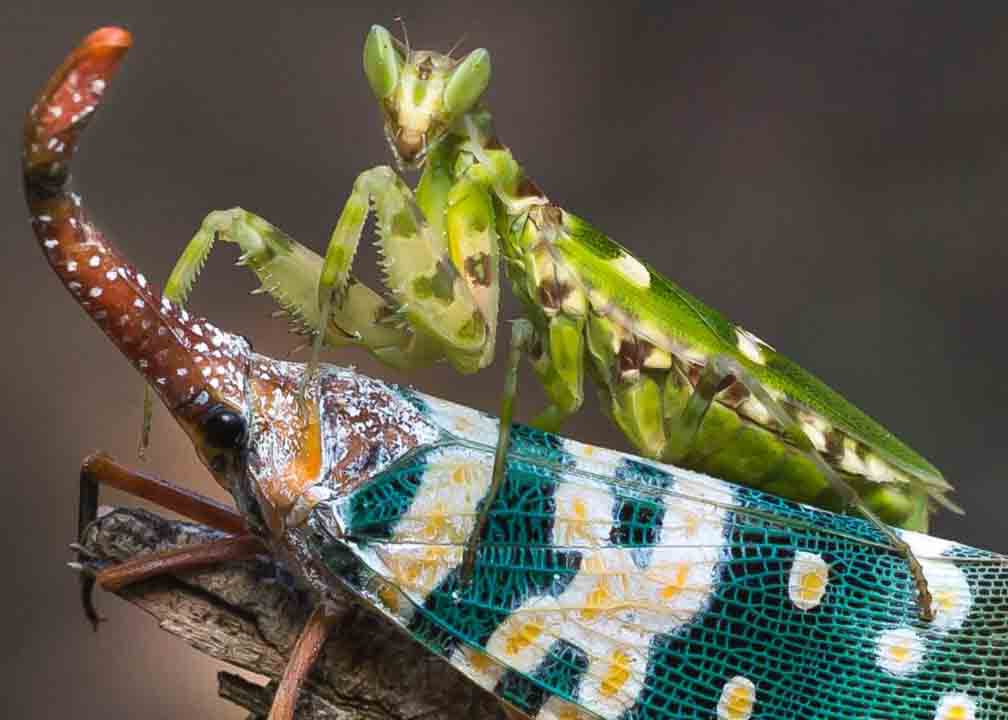Exploring Microcosmic Realms
Introduction: Navigating the Microhabitats of Earth’s Tiniest Residents
This comprehensive guide unravels the mysteries of where insects call home, providing valuable insights for researchers, enthusiasts, and anyone fascinated by the diverse environments that shape the lives of these minuscule marvels.
1. Microcosmic Realms: Understanding Insect Habitats
At the heart of our exploration lies a profound understanding of insect habitats. Emphasizing keywords such as microhabitats, ecological niches, and adaptive environments, this section provides a comprehensive overview of the diverse spaces that insects inhabit. From the forest floor to the aerial canopies, each microhabitat presents unique challenges and opportunities for the insects that call it home.
Understanding the intricacies of insect habitats is crucial for appreciating their role in ecological balance. Microhabitats may include soil, leaf litter, tree bark, or even the fur of mammals. Examining how insects adapt to these environments sheds light on their evolutionary strategies and ecological significance.
2. Terrestrial Wonders: Insects on Solid Ground
Terrestrial habitats encompass a vast array of environments where insects thrive. Highlighting keywords such as soil-dwelling insects, burrowers, and ground-dwelling ecosystems, this section explores how insects have adapted to life on solid ground. From the intricate tunnels of ants to the camouflage tactics of ground beetles, terrestrial habitats showcase the diversity of insect strategies.
Case studies delve into the fascinating world of soil-dwelling insects, highlighting their roles in nutrient cycling, decomposition, and soil health. Understanding these terrestrial ecosystems contributes to our knowledge of the interconnected web of life that sustains our planet.
3. Skyward Bound: Insects in Aerial Habitats
Aerial habitats, including treetops and the open air, present a different set of challenges for insects. Emphasizing keywords such as canopy-dwelling insects, aerial foragers, and flight adaptations, this section explores how insects navigate the vastness above the ground. From the agile flight of butterflies to the suspended silk homes of spiders, aerial habitats showcase the remarkable feats of insect aviation.
Examining the ecological roles of canopy-dwelling insects provides insights into the dynamics of forest ecosystems. Pollination, predation, and even mating behaviors take on new dimensions in the aerial realm, shaping the biodiversity of our planet.
4. Aquatic Realms: Insects Beneath the Surface
Water, whether in freshwater streams, ponds, or marine environments, hosts a myriad of insect life. Highlighting keywords such as aquatic insects, larval adaptations, and benthic ecosystems, this section delves into the diverse adaptations that allow insects to thrive beneath the water’s surface. From the graceful nymphs of dragonflies to the filter-feeding caddisflies, aquatic habitats unveil a hidden world of insect diversity.
Case studies showcase the crucial roles that aquatic insects play in nutrient cycling and the health of freshwater ecosystems. Examining their life cycles, from egg deposition to adult emergence, provides a holistic understanding of the interconnectedness of terrestrial and aquatic habitats.
5. Specialized Environments: Insects in Extreme Habitats
Some insects have conquered extreme environments, showcasing their resilience in habitats that seem inhospitable to most life forms. Keywords such as extremophiles, desert insects, and high-altitude adaptations take center stage in this section, exploring how insects have adapted to extreme conditions. From the scorching heat of deserts to the chilling heights of mountain ranges, specialized environments reveal the tenacity of insect life.
Understanding the adaptations of extremophile insects provides insights into the limits of life on Earth. These insects offer valuable lessons in survival strategies, with implications for ecological resilience and the potential for life in extreme environments beyond our planet.
6. Urban Oases: Insects in Human-Altered Environments
As human influence expands, insects have found ways to thrive in urban environments. Emphasizing keywords such as urban ecology, adaptations to human structures, and pollution-tolerant species, this section explores how insects have adapted to human-altered landscapes. From the bustling streets of cities to the green spaces within them, urban habitats reveal the dynamic relationship between insects and human activities.
Case studies highlight the ecological services that urban insects provide, from pollination in city gardens to pest control in agricultural areas. Understanding the interactions between insects and urban environments is crucial for fostering sustainable coexistence between human development and biodiversity.
7. Interconnected Habitats: The Mosaic of Insect Ecology
In reality, insect habitats are not isolated; they form a mosaic of interconnected ecosystems. Keywords such as ecological connectivity, habitat corridors, and biodiversity hotspots underscore the importance of understanding how different habitats interact. Examining these connections provides a holistic perspective on insect ecology and conservation.
Conservation efforts often focus on preserving habitat connectivity to ensure the survival of diverse insect species. Case studies showcase successful initiatives that prioritize ecological corridors, allowing insects to move between habitats and maintain genetic diversity within populations.
8. Human Impacts: Challenges and Conservation
Human activities, from habitat destruction to climate change, pose significant challenges to insect habitats. Highlighting keywords such as habitat loss, climate change impacts, and conservation strategies, this section explores the threats that insects face and the efforts underway to protect their habitats. From deforestation to pollution, human impacts have far-reaching consequences for insect biodiversity.
Examining successful conservation strategies, including habitat restoration and protected area initiatives, provides hope for the future of insect habitats. Understanding the role of insects in ecosystems and the services they provide encourages proactive measures to mitigate the negative impacts of human activities.
Conclusion: Preserving the Microcosms – A Call to Action
In conclusion, this comprehensive guide to insect habitats offers a panoramic view of the diverse environments that shape the lives of Earth’s smallest residents. May this exploration ignite a renewed appreciation for the importance of preserving insect habitats. As stewards of the planet, our understanding and conservation efforts are essential for maintaining the delicate balance of ecosystems that support insect life. Let this guide serve as a call to action, inspiring individuals, communities, and policymakers to safeguard the microcosmic worlds that contribute to the rich tapestry of life on Earth.

